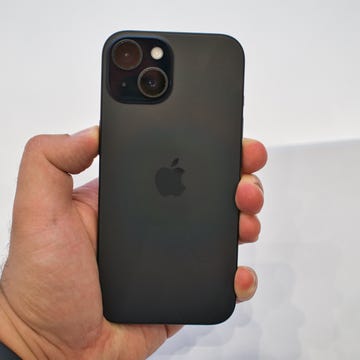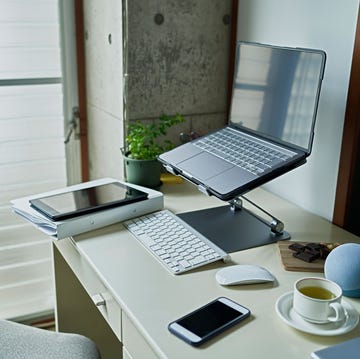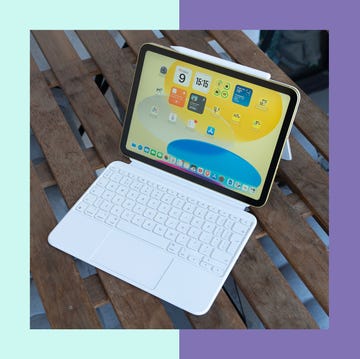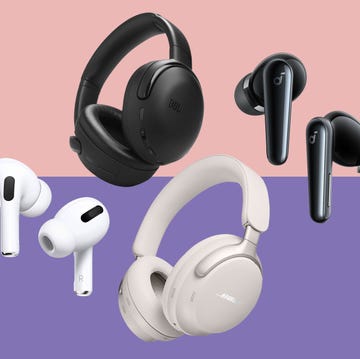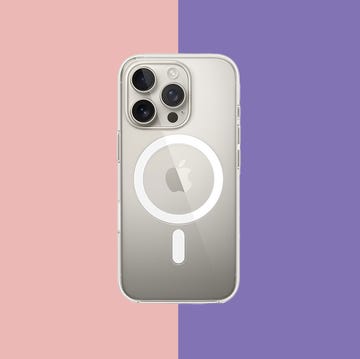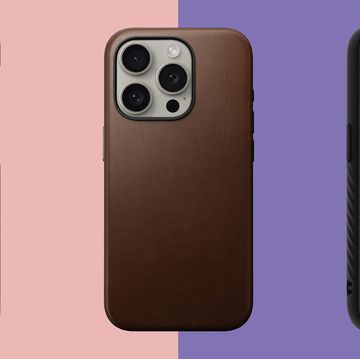We earn a commission for products purchased through some links in this article.
Best cheap phones: 9 of the best affordable smartphones for value
Why spend more on your next handset?

When it comes to the best smartphones it might feel like the iPhone 16 and Google Pixel 9 are the only ones people talk about, but there are several fantastic options out there if you don’t want to splurge and still get a top handset for checking social media, taking photos and videos, using maps or staying in touch with your loved ones.
The best cheap phones still have speedy performance, high-resolution screens, big batteries and 5G for ultra-fast downloads. They’re great if you have a SIM-only plan or don’t want to be tied into a contract, and can be a top choice as a teen’s first phone, or for anyone who needs more features than one of the best dumb phones.
You don’t have to compromise on quality brands when looking for the best affordable smartphones, either. Some of the best iPhone and Android phones are available at reasonable prices these days, with Apple, Samsung, and Google all offering affordable alternatives to their flagships. Not sure what you’re looking for? Scroll down for a complete buyer's guide under our recommendations.
Best cheap phones
Read more related content: Best tablets | Best laptops | Best iPads | Best iPhone 16e cases | Best wireless earbuds | Best power banks | Best headphones for kids
How we chose the best cheap phones

We test the best cheap phones by using them just like you would. We check how fast the handset is to set up and download apps, plus how easy the menus are to navigate.
We assess the camera performance in light and darker conditions and find out if mobile games run smoothly, while also looking at the key specs and features, such as the display refresh rate, charging times, fingerprint sensors and software support.
This list is based on rigorous research, including comparisons to more expensive options, and our hands-on experience.
Pros
It’s the most affordable current iPhone
Upgraded processor, camera, display and battery life
Cons
Only one single rear camera
Only two colour options, and no MagSafe
The new iPhone 16e is the most affordable iPhone right now with the latest features, although it comes at a slightly increased price of £599. That’s quite a price jump when you compare it to the £429 cost of the now-discounted iPhone SE, but it packs in several upgrades for users.
This iPhone is, unsurprisingly, also more expensive than Android rivals on our list, but it’s a top choice if your family and friends communicate via iMessage and FaceTime. Getting the entry-level iPhone is the most practical way to stay in touch with other iOS users, and this one has all the essential features, including a 48-megapixel camera, a speedy modern processor, long battery life and a sleek design with a bright and detailed OLED display.
With its 6.1-inch screen, it isn’t quite as compact as the SE used to be, but we didn’t have trouble using it one-handed. It is a shame that it has just one camera on the back, but it’s fairly versatile in use, as it offers a 2x zoom into the sensor, which gives you enough zoom in most scenarios.
The standout feature is the battery life. The 16e packs in the best battery of any iPhone at this size (as opposed to the larger Plus or Pro Max models), and we found it’ll easily get you around two days of light use. Even with heavier use, you’ll get to the end of the day with about 40% of the capacity left!
Read our Apple iPhone 16e review
Key specifications
| Display | 6.1-inch |
|---|---|
| Operating system | Apple iOS |
| Battery | Capacity not stated; Up to 26 hours of video playback |
| Internal storage | 128GB, 256GB, 512GB |
| Cameras | 48MP main, 12MP front-facing |
Pros
Great specs for the price
A big and bright screen
Cons
Plastic body may feel cheap
Rivals have more water resistance
CMF is the even more affordable sub-brand within Nothing, the British tech company known for its distinctive designs and minimalist operating system. The best things about the new Phone 2 Pro are its low price, impressive hardware, and simple and intuitive take on Android, Nothing OS. You’ll find this in the rest of the Nothing range and there’s no annoying bloatware or adverts all over the interface.
At its most basic configuration for 128GB of storage, this handset will set you back only £219 (RRP), making it one of the cheapest phones we’ve ever tried.
On test, we’ve enjoyed zippy performance and impressive battery life. It also has the same “Essential Space” AI features as the latest Nothing phones. There’s a triple camera setup, a big and bright display and the promise of three years of Android updates and six years of security patches.
The Phone 2 Pro delivers above its price when it comes to cameras. Three rear cameras is rare at this price, and it features a sharp 50MP main lens, a 2x telephoto for zoom, and an 8MP ultra-wide. Shots in good lighting impressed us, though low-light photos can look soft due to the lack of image stabilisation.
Build-wise, it comes in bold colours and has a “modular” design with visible screws and a customisable back. The plastic body is lightweight, and it’s got basic splash and dust protection. You can snap on accessories like magnetic wallets or extra lenses, too, adding a bit of extra functionality.
Overall, the Phone 2 Pro is excellent value. It offers style, solid features, great software, and versatility that’s rare at this price. Yes, it’s a budget phone, but it doesn’t feel like one.
Key specifications
| Display | 6.77-inch |
|---|---|
| Operating system | Android, Nothing OS |
| Battery | 5,000mAh |
| Internal storage | 128GB, 256GB |
| Cameras | 50MP main, 8MP ultra-wide, 50MP 2x telephoto, 16MP front-facing |
Pros
Smooth performance
Excellent camera quality
Cons
Larger bezels
Design won’t suit everyone
The Google Pixel 9a is a fantastic budget-friendly smartphone, offering many of the high-end features and specs found in its flagship counterpart, all for under £500. The most compelling features include the capable camera performance, upgraded battery life, unique design, AI smarts, and the crisp and smooth 120Hz display.
Photography enthusiasts will be pleased with the Pixel 9a's camera, which, despite having a slightly smaller sensor than the flagship model (and its predecessor, the Pixel 8a), still produces detailed and clear shots that are better than anything else in this price tier. The absence of a telephoto lens is mitigated by the impressive performance, the inclusion of macro close-up photography (for the first time in the A-series) and the ability to zoom in to the 48-megapixel sensor with a 2x crop zoom.
Under the hood, the Pixel 9a houses a flagship chipset that matches the performance of the pricier Pixels. It also has an increased battery capacity and has no trouble lasting for a full day and sometimes into the next.
One of the most appealing aspects of the Pixel 9a is Google's promise of seven years of software updates, which should keep the device secure and up-to-date. Overall, this makes it an excellent choice for anyone looking for a durable, feature-packed phone without spending over £500.
Read our Google Pixel 9a review
Key specifications
| Display | 6.3-inch |
|---|---|
| Operating system | Android |
| Battery | 5,100mAh |
| Internal storage | 128GB, 256GB |
| Cameras | 48MP main, 13MP ultra-wide, 13MP front-facing |
Pros
Versatile camera system
Sleek design with a fantastic screen
Cons
The ultra-wide camera can be hit-and-miss
No wireless charging
Phones are all starting to look identical, and you need to turn to a newer company like Nothing if you want something different. The Phone (3a) is the affordable model of the London-based brand's latest releases, and it delivers features that rival flagship models. The design is a head-turner. It's distinctive, with its transparent casing and the unique “Glyph” lighting system on the back. This adds a sci-fi touch and can be handy for priority notifications and timers.
It's no slouch when it comes to performance, too. It has a powerful processor and a vibrant 6.77-inch display with high brightness and a high refresh rate. It also has a large 5,000mAh battery that gave us impressive battery life during our testing.
One of the most impressive upgrades from its predecessor, the Phone (2a), is the addition of a 50-megapixel 2x optical zoom camera. This upgrades the phone’s versatility, allowing for better close-up shots and pictures of distant subjects. It also has an 8-megapixel ultra-wide and a 50-megapixel main lens, producing crisp and detailed images with fun custom preset looks.
Running on Nothing OS 3.0, the phone offers a minimalist Android experience with a focus on simplicity and personalisation. It's clean, intuitive, and free from unnecessary clutter.
While the ultra-wide lens performance could be better and the phone lacks wireless charging, these downsides are minor. Overall, the Phone (3a) is ideal for anyone after a unique design, minimalist functionality, powerful performance, and advanced camera capabilities. It's great value for money, and we love that it comes in striking white, black or blue shades.
Key specifications
| Display | 6.77-inch |
|---|---|
| Operating system | Android, Nothing OS |
| Battery | 5,000mAh |
| Internal storage | 128GB, 256GB |
| Cameras | 50MP main, 8MP ultra-wide, 50MP 2x telephoto, 32MP front-facing |
Pros
Great specifications for the price
Impressive battery life
Cons
Design marks with fingerprints
Rivals offer better performance
Samsung makes a lot of smartphones, and we know that it can be hard to work out which one suits you.
If you’ve already got a Samsung and know that you like the hardware, features and interface, it makes sense to pick a model from the brand for your next phone, but do you need the high-end Galaxy S25 Ultra? The Flip? Or the FE/Fan Edition?
If you’re sticking to affordable handsets, you’ll want to go with the Galaxy A56. It offers loads of value at £499, and impresses with a premium style, aluminium frame, large 6.7-inch display, and IP67 water resistance. The one we tested has a glossy reflective “graphite” finish – it looks smart, although it does pick up fingerprints easily.
The cameras perform better than they did on the Galaxy A55 model this replaces, too. They’re detailed, colourful and well-balanced, and it feels less likely to over-process images compared to its predecessor.
While the Galaxy A-series phones aren’t designed to be powerhouse performers, they don’t disappoint for most tasks and will only struggle for extended, high-demand tasks, like mobile gaming. The battery is also high-capacity and quick to charge, so it’ll get you through the day without needing refuelling.
We’re impressed by the user-friendly software (although it is full of irritating pre-downloaded apps) and the included AI features to help you take your best photos and videos. It has extras like “Auto Trim” to create highlight reels by editing together videos, and ways to make your own photo filters. Overall, it’s a strong contender in the mid-range market if you’re set on a Samsung handset.
Key specifications
| Display | 6.7-inch |
|---|---|
| Operating system | Android, Samsung One UI |
| Battery | 5,000mAh |
| Internal storage | 256GB |
| Cameras | 50MP main, 12MP ultrawide, 5MP macro, 12MP front-facing |
Pros
Improved camera, with a 3x zoom lens
Long battery life
Cons
Enormous camera bump
Lacks wireless charging
It’s quite rare to find a proper telephoto zoom lens on an affordable phone. In fact, they can be rare to see on mid-range models. That’s why it’s so impressive that both the Nothing Phone (3a) and this handset, the Phone (3a) Pro, have third lenses. This zoom is the longer of the two, making it potentially even more versatile for photographers.
Overall, the phone makes a compelling case for itself as one of the best budget smartphones you can buy, with its striking and unique design, plus a handful of upgrades over the Phone (3a).
It has a crisp 6.7-inch screen for smooth performance and vibrant colours, making it ideal for scrolling social media, gaming, or watching videos. It also has a great Snapdragon processor, so it will deliver a snappy performance and better multitasking capabilities.
Its combination of a useful ultra-wide, high-resolution wide and telephoto cameras, and a 50-megapixel selfie camera, makes it the most capable Nothing phone camera yet. We found the results and colours impressive, and the phone holds a lot of appeal for photo and video creators at this price. We still think many people will prefer the natural tones of a Google Pixel, but this is a great option for pictures with a more contrast-filled and subdued style.
Key specifications
| Display | 6.77-inch |
|---|---|
| Operating system | Android, Nothing OS |
| Battery | 5,000mAh |
| Internal storage | 256GB |
| Cameras | 50MP main, 8MP ultra-wide, 50MP 3x telephoto, 50MP front-facing |
Pros
Similar to the A56 for a lower price
Impressive battery life
Cons
The plastic frame can feel cheap
Performance beaten by rivals
There aren’t as many differences between the latest Galaxy A56 and Galaxy A36 models as you might assume, but there is a big price difference – you can save £100 by going for the A36! It has a bit of a pearlescent gradient, and more of a plasticky feel because it lacks an aluminium frame, but there are otherwise a lot of similarities to the A56.
The phones both have the same 6.7-inch OLED display with high-brightness and high refresh rate, the same IP67 water resistance, similar cameras, the same storage capacities, the same battery sizes, and the same charging speeds. They’re about the same size, and we didn’t notice the minor weight difference too: the A56 is 198g, while the A36 is 195g.
One difference is that the A56 has a better ultra-wide camera compared to the A36, but you may not notice this if you don’t use that perspective often, and neither is as good as the Pixel 9a in this area. The A36 also has a less powerful chip, but it’s still capable enough for the basics like browsing the web or social media, and its battery will last you through the day with ease.
To complicate things further, it’s worth noting that Samsung makes an even more affordable Galaxy A26 model. It has the same plastic frame, display and battery and some small design, camera and processor differences – but it is fantastic value at £299. Essentially, if you’re looking for solid performance, cameras and displays, you’ll find there’s a lot to like in each of the models from Samsung’s budget range.
Key specifications
| Display | 6.7-inch |
|---|---|
| Operating system | Android, Samsung One UI |
| Battery | 5,000mAh |
| Internal storage | 128GB, 256GB |
| Cameras | 50MP main, 8MP ultrawide, 5MP macro, 12MP front-facing |
Pros
Paper-like display mode
Matte screen finish
Cons
Camera performance is unimpressive
Poor vibration motor
A rather unique option in the world of budget smartphones, this big-screen handset has a “Nxtpaper” switch on its right side that transforms the 50 Pro’s screen to make it look “ebook-like” for an improved experience when you're reading.
The screen itself also has a matte treatment that effectively limits glare and already makes it easy to read, while the Nxtpaper control allows you to go into a “Colour Paper Mode”, “Ink Paper Mode” or “Max Ink Mode” – the first two reduce saturation in either a colour or monochrome mode, while Max Ink turns off notifications and increases battery life.
As it’s still an LCD, a proper ereader like a Kindle will still give you more of a paper-like experience with a front-lit E Ink screen. But, for many, this will feel like the best of both worlds. Beyond its reading features, it has a big battery, a lot of storage, and a useful port for wired headphones.
Its camera system hasn’t impressed us, though, as it doesn’t take pleasing images or videos from any of the multiple cameras on the rear, and its front-facing sensor doesn’t produce satisfactory results either. However, if your focus is more on reading, battery life and reliable performance than photography, the 50 Pro Nxtpaper delivers a lot of useful features for under £300.
Key specifications
| Display | 6.8-inch |
|---|---|
| Operating system | Android |
| Battery | 5010mAh |
| Internal storage | 512GB |
| Cameras | 108MP wide, 8MP ultrawide, 2MP macro, 32MP front-facing |
Pros
Large icons for ease of use
Big display
Cons
Lacks power compared to other handsets
May be too basic for some users
Like the sound of the Doro phones from our best dumb phones roundup, but would rather have a smartphone? The 8100 is a capable handset designed with older users in mind. It guides you through the setup in an accessible way and uses an adjusted version of Android that makes navigation straightforward.
We like how you’re greeted with three large icons on the home screen: “call”, “view” and “send”. From there, you access options like “call a contact” or “send a message or video” without having to dive into apps.
It has a big screen, a decent camera system, and the useful Doro “response” button, which is an upgraded version of the brand’s assistance feature that shares the phone’s location with pre-approved contacts.
Key specifications
| Display | 6.1 inch |
|---|---|
| Operating system | Android |
| Battery | 3,000mAh |
| Internal storage | 32GB, expandable up to 128GB |
| Cameras | 13MP main, 2MP portrait, 2MP macro (rear), 5MP (front) |
Verdict: Best cheap phones

When it comes to the best affordable phones that you can buy in 2025, there are a lot of options, and many of them cost under £500. For those on a tight budget, we’d recommend the Nothing Phone (3a), which you can grab for as low as £329. The most affordable phone we recommend right now is the CMF Phone 2 Pro, which impressively starts at £219!
The Google Pixel 9a (starting at £499) is the top Android phone we recommend at under £500, while the Samsung A56 5G (starting at £499) is the pick we’d suggest if you’re a Samsung user. There’s also a solid Samsung Galaxy A36 5G, which only costs £399.
Right now, Apple doesn’t make iPhones at the same low prices as certain Android models, but you can get an affordable iPhone 16e for £599, which is still £200 less than the main iPhone 16 model.
How to buy the best cheap smartphone

Here’s what to look out for when buying an affordable phone.
Screen size
You want to choose a screen size that matches how you will be using the phone. Buying the phone for kids who'll play mobile games or read a lot? A larger screen of at least six inches will reduce their eye strain.
As smaller phones have largely been phased out, a 6-inch display is the size of most smartphones these days, but some go up to 6.7 inches and over, which may be more cumbersome but will give you much more viewing space.
Screen resolution
This is how sharp the picture on the phone looks. You should go for a higher resolution if you watch loads of videos via streaming services or YouTube as you will want the best quality. A high-quality OLED display will also help.
Refresh rate
This is how many times the display fully refreshes every second, and is measured in Hertz, or Hz. What does that actually mean? The higher the refresh rate, the smoother your phone feels in use, like when scrolling through social feeds or playing games. Most phones have at least 60Hz, but some offer up to 120Hz.
Storage
The more storage you have, the more files, photos and downloads you can have on your phone. This is always measured in gigabytes (GB), with popular sizes including 64, 128, 256 and 512GB, with some flagship handsets offering a huge one terabyte. That's equal to 1,024 gigabytes. The larger sizes tends to be more expensive, though.
It’s hard to say how much stuff this holds, as every file type is a different size (some mobile games take up gigabytes on their own, but photos are much smaller). An HD film is around 4-5GB, so 256GB would hold around 50 of those movies, for example.
We advise looking for 128GB of internal storage at a minimum, but it's better if you can get 256GB. Some phones let you extend the storage using a microSD card, and you can access more space using “cloud” services, such as Apple iCloud or Google Drive.
5G vs 4G
Every smartphone on our list comes with 4G connectivity, but there are now plenty of affordable handsets selling for well under £400 that also offer access to 5G networks, as long as you have the correct data plan.
If you do, you can get faster internet, streaming and download speeds in cities with 5G connectivity. It can be perfect if you want to save a lengthy Netflix movie or Spotify playlist quickly before a trip.
Battery life
You don’t want your smartphone to run out of juice in the middle of your day, so it’s important to get a model with decent battery life. Battery capacity is measured in milliamp hours, or mAh, and the general rule is that the bigger the number, the more power you will get.
We suggest aiming for as close to 5,000mAh as possible – this should be enough for at least one full day – but remember that how long your phone lasts depends on how much you use it. If you're worried about running out of juice, it's worth investing in one of the best power banks.
Cameras
All of the phones on our list have at least one rear camera. But the quality of the lenses and software used to make your images look better is different, depending on your phone.
We have listed the available cameras and megapixels (MP) within our roundup, but it’s worth noting that megapixels don’t matter all that much. It’s a bit of a misconception that more megapixels will get you better images. Image processing, sensor quality and size will have more impact on picture quality.
Processor
This is the brain of your phone – sending and receiving commands and information to all of the apps, games and cameras and keeping everything running smoothly.
The processor has an influence on how fast the phone feels to use. We’ve made sure every product on our list is capable when it comes to speed and performance.
Security
You want your phone to be protected from snooping, and all handsets have security features that limit who has access.
You can add passwords and patterns to your screen, but some phones also have fingerprint readers that are encoded to your thumbprint, or face recognition to unlock the phone via the front-facing camera. Using your phone for online banking? Make sure these are all turned on.
Headphone jack
If you have a trusted pair of wired headphones, there’s a very good chance they connect to your phone via a 3.5 mm jack. Most phones no longer come with this feature (in part due to the popularity of wireless noise-cancelling headphones and earbuds).
If this matters to you and you’re not ready to ditch wired headphones, check the spec list before buying. It's worth remembering that you can buy a set that connects via the USB-C port or use a USB-C to headphone port adapter.
Weather resistance
If you're taking the phone on holiday or using it for your morning jog, make sure it’s protected from the elements. This is measured as an IP (Ingress Protection) rating. It tells you how safe the phone will be from water and dust.
In general, the higher the two-digit number, the more it’s protected. We recommend aiming for at least IP64 so it’s protected from dust and water sprays, but IP68 would be better. This means your phone may still survive submersion in up to 1.5 metres for up to 30 minutes (it’s not a given, though, so avoid testing this if possible).
Software updates
Software updates keep your phone healthy. They make sure you have the latest version of your operating system and keep your handset protected from hacking threats. Make sure you will get multiple years of support.
Google and Samsung now try to promise at least six years of support, even with their affordable handsets, but lesser-known brands may not support phones for quite as long. They can also come with outdated software versions, or their updates won’t be released as frequently.
Are refurbished phones worth it?

Buying a refurbished smartphone is a good way to save some money if you’re buying outright, as long as you know what you’re getting. These handsets are more affordable than buying new, but are graded based on how much cosmetic damage you will see.
They may not have the original packaging or charger, and some may have been returned to the retailer or fixed after suffering from a minor fault. As you are reusing, it's a more sustainable way of upgrading to a new phone.
Some of the best ways to shop for refurbished phones are Back Market, Amazon and Giffgaff, but each store has a different grading system, so make sure to check each one to determine what condition the device is in.
Back Market grades from “Fair” – which means some visible scratches or dents – to “Excellent”, which means “perfect” condition with the possibility of a few minimal marks. Amazon’s system, Renewed, goes from “Acceptable” to “Excellent”, while Giffgaff goes from “Good” to “Like New”.
This is different from buying second-hand from a private seller via a marketplace like eBay, as refurbished phones get formal testing to make sure they are in full working order before being sold. Crucially, refurbished handsets come with a warranty. Every store is different, but Back Market, Amazon and Giffgaff all offer at least one year of warranty – so you’re covered for unexpected faults or malfunctions (but not accidental damage).
Simon Cocks is Good Housekeeping UK’s Technology Editor, overseeing tech shopping content and strategy for the title. He previously also worked across other titles including Esquire UK, Digital Spy, Men’s Health UK and Women’s Health UK.
Simon specialises in testing the latest smart gadgets, home entertainment gear, headphones, speakers, portable chargers, radios, e-book readers and smartphones. He's reviewed top tech products from brands including Google, Apple, Amazon, JBL and Bose.
A magazine journalism graduate from Kingston University in 2014, Simon also worked on the Discovery and Silkroad inflight magazines. He then gained experience writing about entertainment at SFX and Total Film. He also contributed reviews and interviews to TwitchFilm (later ScreenAnarchy), CultBox and Frame Rated.
He joined Good Housekeeping UK as the Editorial Assistant for Special Projects and was part of Good Housekeeping’s Consumer Affairs Team between 2014 and 2019. In this role, he conducted price comparison research, wrote detailed household and money-saving advice guides and edited thousands of in-depth reviews for the Good Housekeeping Institute.
He has focused on technology and gadgets since 2020, where he started by testing out power banks and instant cameras. He writes reviews, roundups, news articles and deals updates, and also covers top tech deals during sales like Amazon Prime Day, Black Friday and Cyber Monday.
When not testing out the latest gizmos, you’ll find Simon either catching up with the newest releases at his local cinema or out shooting with his beloved compact camera.
You can follow Simon on Instagram, on Bluesky, on LinkedIn and on Threads.
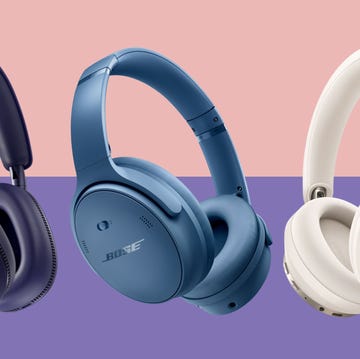
Best over-ear headphones to buy right now

The best power banks to shop in 2025

The best smartwatches you can buy at every budget
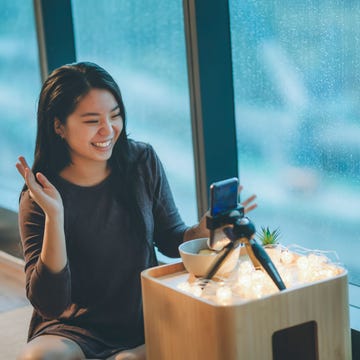
Best phone stands










